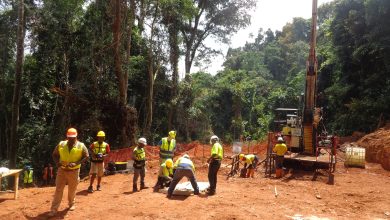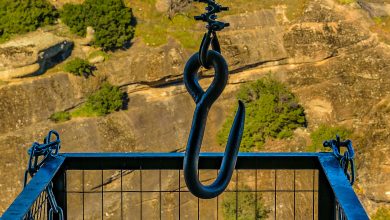
Safely resolving reactive ground when blasting
When a South African zinc mine experienced a premature detonation in one of its blastholes, BME was soon on site to investigate the incident and apply a safe strategy to proceed.
According to BME technical services manager Deon Pieterse, the cause of the detonation was the reactive ground being drilled for blasting. This was an example of the exothermic chemical reaction that can occur between sulphide-bearing rock and ammonium nitrate-based explosives in the blasthole.
“The mine was found to have geologically bounded reactive zones within its rich zinc deposits,” said Pieterse. “Due to the natural process of weathering and leaching, the upper benches of the transition zone are more prone to reactivity – as these benches contain more exposed sulphide or sulphide bearing rock and soils.”
He noted that the area being blasted had previously been mined and did not have a history of ground reactivity. Where reactive ground is known to occur, reactive zone mapping of the geology of the mine can be used to mark out potential reactive ground areas in the current and future mining blocks.
“In this case, an unexpected detonation of three holes occurred after the loading process was completed and before blast firing,” he said. “There were no injuries associated with these events.”
Inspection
The blast block was immediately evacuated and barricaded. For two days, other blast holes showed signs of reaction. This included the emission of smoke and yellow orange reacted emulsion froth coming out of the blast holes. After signs of reaction ceased, and the pit was declared safe, and an in-pit inspection was conducted. Ground samples were collected from the reactive areas and sent for ammonium nitrate and ground reactivity analysis.
“During our inspection, 35 holes were found to have shown signs of reaction,” he said. “Other holes were temperature checked with in-hole readings of between 131°C and 170°C at one metre below the hole collar. South Africa National Standards require detonators to function nominally up to 85°C; anything above this increases the possibility of unplanned detonation.”
Ground samples were collected from the reactive areas and sent for testing at the BME’s Losberg laboratory. Here, extreme reactions were observed in two samples of reactive ground that had been loaded with uninhibited bulk ammonium nitrate explosives.
“We monitored the temperature of the samples during testing with a temperature data logger, and measured temperatures exceeding 700°C within an hour of mixing the samples,” he said.
BME was then able to apply its urea-inhibited bulk emulsion – brand named INNOVEX™ RG – which is specially designed for use in reactive ground. Applying the same tests, this inhibited emulsion did not react, or cause any temperature spike.
“We then conducted ongoing characterisation work to understand the reactive ground at the mine,” said Pieterse. “As mining progresses, drill samples are analysed and tested, helping us to build reactive zone maps of the geology.”
In terms of safety practice associated with reactive ground, he explained that mines should conduct a risk assessment where they suspect reactive ground. This should include the monitoring of potential reactive ground indicators. If reactive ground is identified, he outlined a range of controls to manage this risk.






